The Norseman Xtreme Triathlon is a gruelling challenge that's not for the faint of heart.
You’re halfway up a mountain. The wind has been trying its hardest to stop you for 14 long hours, since you plunged into an icy fjord at around 5am. The past hour has been fuelled by adrenaline alone, carrying you on your way.
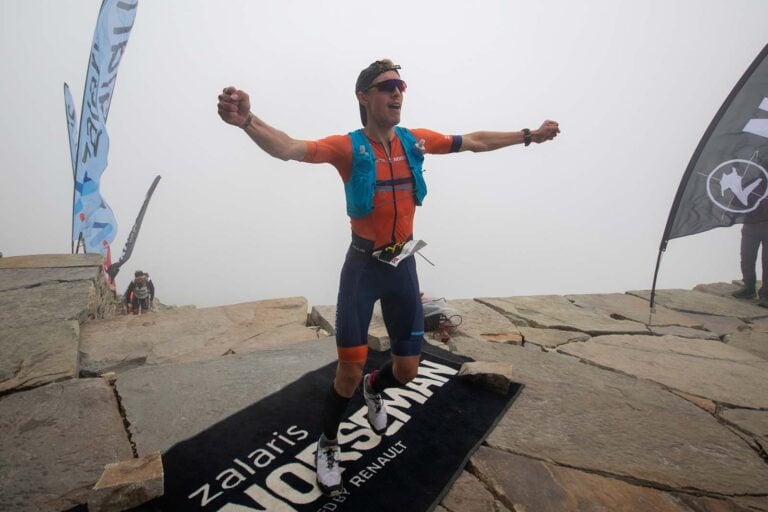
You’re battered, but not broken. You know that soon, and hopefully soon enough, the finish line will finally come into view. Welcome to the Norseman Xtreme Triathlon.
The annual event features a 3.8km fjord swim, a 180km cycle ride through the mountains and a 42.2km run/climb to the top of a local mountain. Phew! Let's take a look at the event, and how it came to be.
A Nordic challenge
When it comes to Norway and multi-sport events you probably think of the biathlon. This unique combination of cross-country skiing and shooting is a tradition that arose in Scandinavia and is certainly still very popular in the region.
However, the triathlon is growing in popularity every year, in all regions of the globe, and Scandinavia is no exception. But even when they’re jumping on bandwagons, the Norse people like to do things a little bit differently.
People who know it, talk about the Norseman Triathlon in hushed tones of reverence and awe. Those who have won the black jersey – the only prize for finishing – are revered as Gods among men in athletic circles.
Read more: Running in Oslo: Routes and Advice for Locals and Visitors
But people who don’t know might well ask…what is a triathlon anyway? And what makes the Norseman version so difficult? Well…let’s find out!
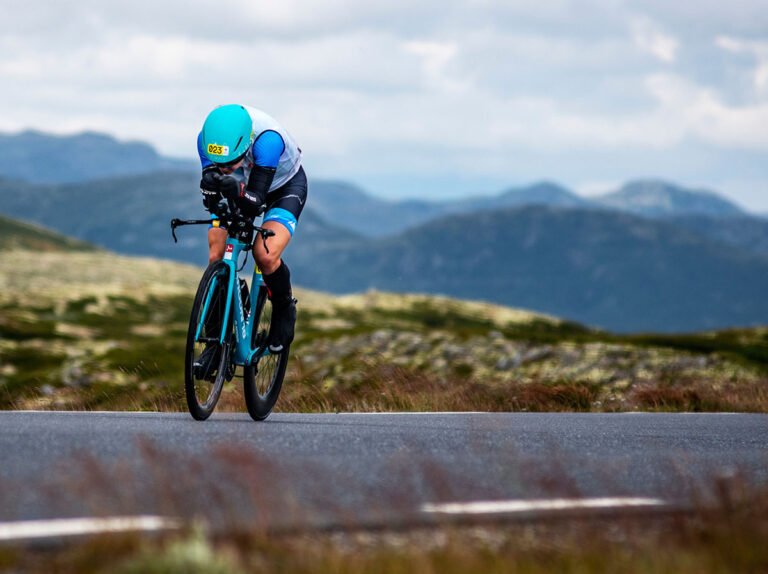
The Modern triathlon
The triathlon consists of three entirely different sports than the biathlon. Instead of strapping skis to their feet, or picking up a rifle, competitors swim, cycle and run over various distances, usually without a break in between.
The event requires endurance and stamina as well as skills in three distinct athletic disciplines.
The origins may be traced back to an early 20th century French event called ‘Les Trois Sports’ (The Three Sports) but the modern triathlon has its origins in 1970s Southern California.
Read more: Kristian Blummenfelt: Norway’s Olympic Triathlon Champion
An ex-swimmer called Jack Johnstone was struggling to maintain fitness levels with just running and needed something more. He heard of an event called the Dave Pain Birthday Biathlon (no relation to the Norse version!) which consisted of a run followed by a swim, and entered.
After decent success in the event two years running, Jack realised that multi-sport events were what he, and the other enthusiastic participants, had been looking for. He convinced his local club in San Diego to schedule an event on the calendar.
Jack was advised to consult with Don Shanahan who already had ideas about ‘weird’ events. Don liked the idea but wanted to add a cycling leg to the event. Jack agreed, and the modern triathlon was born.
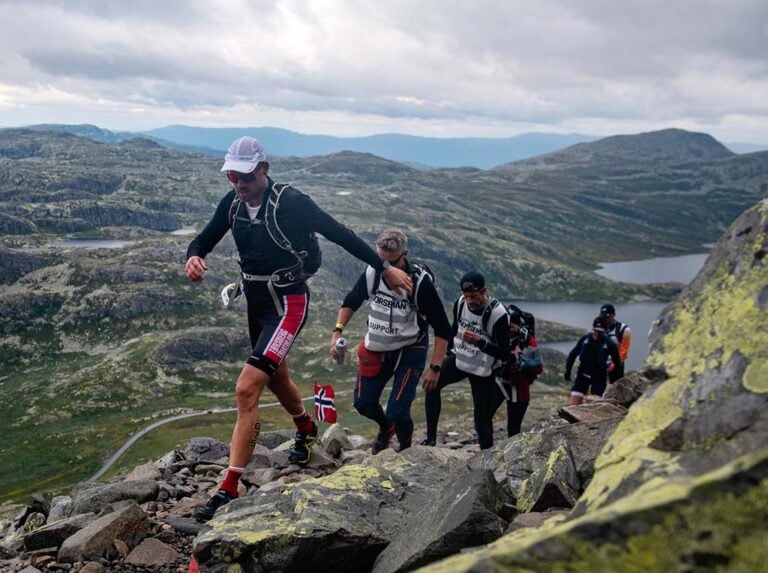
The initial event consisted of a run, a cycle, a swim, more running and more swimming before crawling up a dirt bank to the finish line. In total an impressive 46 entrants competed and the event was a success.
Two of the entrants, John and Judy Collins, saw the potential of what this format could become.
I am Iron Man
Over the next few years, various formats were trialled in various places as this new triathlon spread quickly through the worlds of running, cycling, and swimming. Today a regular or novice triathlon consists of 400m swimming, 20km cycling and 5km running.
It was in Hawaii that U.S. Navy Commander John Collins and his wife Judy took the format that they’d enjoyed in San Diego. A magazine article pointed out that the famous Belgian cyclist had the highest oxygen uptake of any athlete ever measured. In other words, he was the fittest man known to science.
The local runners and swimmers, many of them military friends of John and Judy, were unconvinced, and sought to settle the debate with an ‘Ultimate’ competitive test of fitness. The island of O’ahu already had major races in all three disciplines.
The Waikiki Roughwater was a 3.9km (2.4 mile) swim, the Around-O’ahu Bike Race was a 185km (115 mile) 2-day cycling event and the Honolulu Marathon was, as the name suggests a 42.195km (26.219 mile) running race.
By trimming just shy of 5km off the bike race, they could start it at the end of the Roughwater swim and end it at the start of the Honolulu Marathon. And so, in February 1978, fifteen men set off to discover whether such a feat was possible and, if so, whether it was a good idea!
Of the men who started, 12 completed the race. The winner, Gordon Haller, a U.S. Navy Comms specialist, crossed the finish line in 11 hours, 46 minutes, 58 seconds. Prior to the start, John Collins had declared “whoever wins the race, we’ll call him the Iron Man” and thus Gordon Haller was the first ever Iron Man.
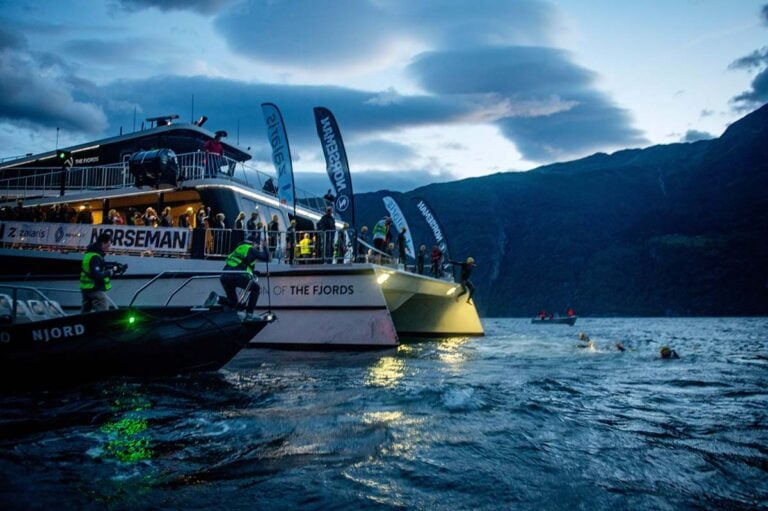
With little in the way of marketing, the race in 1979 attracted 50 entrants, one of whom, Lyn Lemaire, placed 6th overall and was crowned the first Iron Woman. Over the next few years, the race moved to the less urbanised Hawai’i Island and was taken over by the owners of the Nautilus Fitness brand.
The Hawaiian Ironman, the original and best, is still run today. It is known as the Ironman World Championship and qualification is through one of the other approximately four dozen Ironman events worldwide.
As Ironman is a trademark, other events run over the same distance are often known as iron-distance or full distance events.
Notable Ironman participants include Jan Frodeno of Germany who holds the fastest iron-distance record of 7:27:53. Jan also holds the Hawaiian record of 7:51:13. The fastest of any official Ironman competitors is Tim Don from the UK who ran the Brazil event in 7:40:23.
Iron distance, Scandinavian style
How do you take an event like an Ironman triathlon, that’s already too hard for most people to consider in their lives, and make it even harder and more gruelling?
One way is to double or treble the distance, although you run the risk of running out of time in a single day. Even though endurance is the name of the game, working out for over 24 hours without a break isn’t usually a popular idea to pitch to people!
Some ultra-triathlons (triathlons longer than full distance) consist of multiple triathlons over multiple days or, say, a full day of swimming, a full day of running and a full day of cycling. The Scandinavians, however, had a better idea.
What does Norway possess that is the envy of the world? Crystal clear waters, beautiful towering mountains and stunning scenery. So, why not use that to create the most spectacular event the world has ever seen?
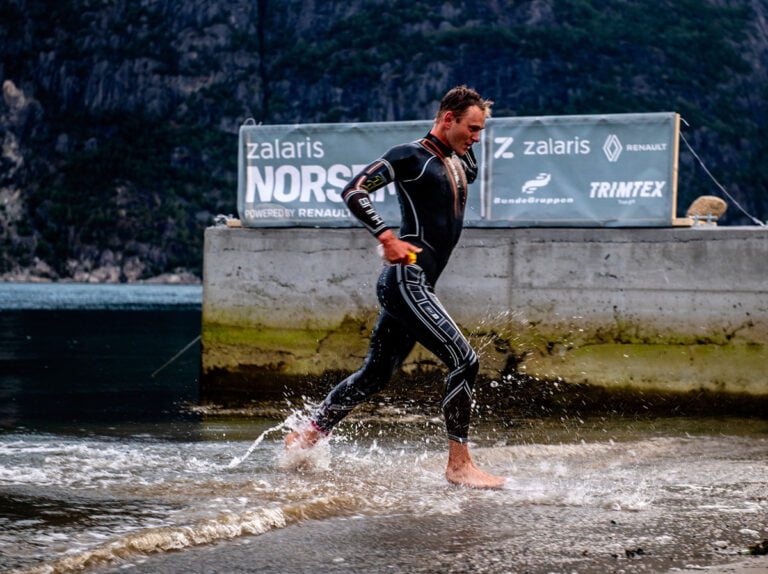
Okay so, running and cycling up mountains is going to make things MUCH harder. And to be honest, the water in Norway’s fjords may be clean and pure but it’s not generally known for being warm!
But… maybe if you have the event in summer, where in much of the world it’s way too hot for such things, then it might all work out fine.
The Hardangerfjord route
The Norseman Triathlon starts on a car ferry in the Hardangerfjord, Norway’s second longest fjord. Competitors, clad in mandatory wetsuits, jump off the ferry’s loading bay into the cold water below.
They then swim 3.8km (2.4 miles) along the fjord to the town of Eidfjord.
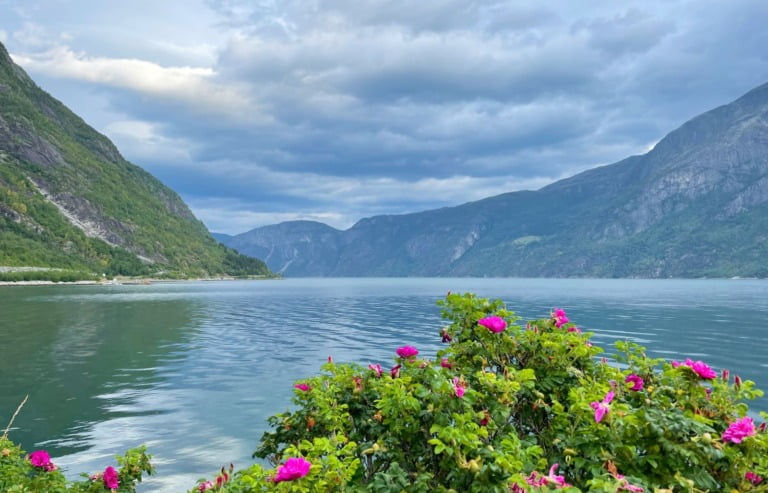
At Eidfjord they jump onto their bikes and begin a gruelling 180km (115 mile) cycle through the mountains. The initial 40km (25 miles) is uphill and reaches an altitude of 1,200m above sea level. They continue to Austbygdi where they leave their bikes and set out on foot.
The road race takes them 25km (15.6 miles) along the flat to Rjukan before they start to climb the Gaustatoppen mountain for the final 17km (10.6 miles) where they ascend the mountain to an elevation of 1,880m above sea level.
For the last few miles you may well be scrambling over boulders so ‘running’ isn’t always the best word for it!
If that all sounds a bit too easy, competitors who don’t reach a checkpoint halfway up the mountain within a certain time have to turn round and run back down the mountain to get a white ‘not quite winners’ jersey.
Some find this disappointing but it’s still a mark of an impressive achievement. But only a certain number can win the coveted black jersey that marks you out as one of the best, or certainly most foolish, athletes on the planet!
Perhaps the hardest aspect of the race overall is that it’s unsupported. There are no water stations to keep you hydrated so you need to arrange this for yourself.
You need a support team with energy and fluids, and competitors are also mandated to carry suitable gear up the last few miles, to deal with any weather conditions they may encounter at the top of the mountain, from beating sunshine to blizzards!
Read further: One man's account of the Norseman Triathlon (external link)
Returning after Covid
Sadly, like so many things, the 2020 event had to be cancelled due to covid. Even though it is an open-air event, it would have been difficult to ensure the safety of all participants, and, at the time, international travel was mostly suspended.
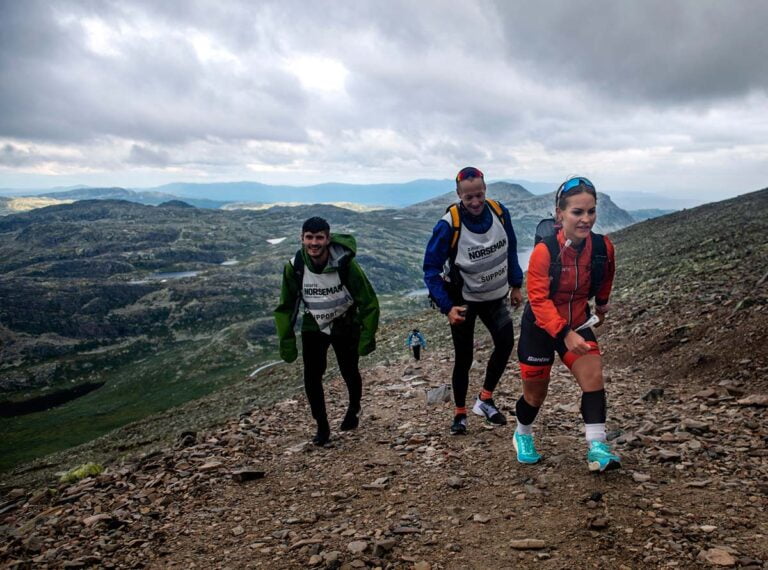
The event returned in 2021, with a limited field of just 105, compared with the 290 that should have competed in 2020.
That’s still more than the 21 competitors who lined up for the first race in 2003 so, no matter what, the event has certainly come a long was in a short amount of time.
The conditions in 2021 were typically Scandinavian, with extreme winds greeting the competitors on the mountain. High waves formed in the fjord and headwinds on the bike section meant the athletes had to put in major effort just to move at all!
The men’s winner in 2021 was a relative newcomer to the sport of triathlon, 26-year-old Jon Breivold from Oppegård. After starting the sport only 12 months prior, he won an Ironman competition in Tallin in a great time.
At Eidfjord he proved this was no fluke, coming in with a highly respectable time of 10 hours, 21 minutes, and 47 seconds.
The women’s winner was Lillehammer’s Julie Aspesletten, ensuring a win for Norway in both the male and female class. Julie is also a relative newcomer having started in triathlon in 2019. 12:39:18 is definitely an impressive time for a debutante who has, in just two years, already become a Norwegian long-distance champion.
Second place for the men went to Kristian Grue, also of Norway, while third place was secured for the home nation by Allan Hovda, who remains the only person to win the race three times.
In the women’s race, Brit Flora Colledge came in second place while Austria’s Dominique Lothaller finished third.
Science of cold water
The most extreme part of the challenge is generally the water. Even in a good year, it’s unlikely to rise above 15 degrees Celsius, which is still very much on the cold side.
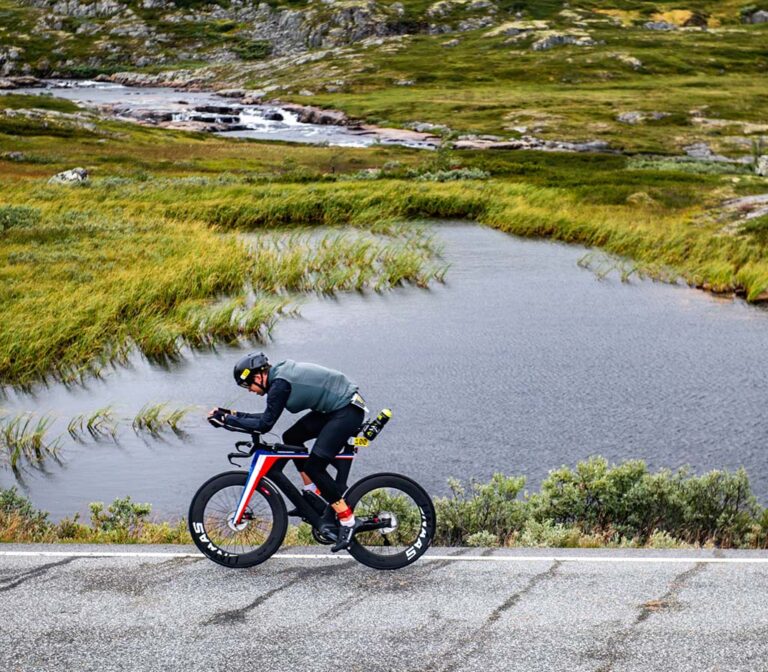
In 2015 the water was measured at only 10 degrees Celsius, and the organisers took the decision to cut the race in half to 1,900m instead of the usual 3,800m.
Since then, scientists have been using the race as an opportunity to study the effects of cold-water swimming on physiology. The ‘Cold Water Research Project’ is a multi-year effort to study things such as biomarkers and lung function as athletes compete in these extreme conditions.
So, as well as offering the opportunity for competitors to have bragging rights around the globe, it also offers scientists the chance to study what would otherwise be almost impossible.
This can answer questions such as whether the prolonged cold swim has a long-term effect on core temperature, which could effectively help in the other sections.
Other questions they hope to answer include what can be done to mitigate the effects of cold water on the body.
Maybe there are supplements they can take or clothing that can do a better job of keeping out the cold while still allowing the athletes the full range of motion that they need.
Maybe they’ll never solve the age-old argument about whether runners, swimmers or cyclists are the fittest. But I’m sure everyone is agreed that anyone who finishes the Norseman Triathlon is way fitter than most people in the entire world!
Have you ever run a triathlon? Does this make you want to get your gear on and start training up for the challenge?

